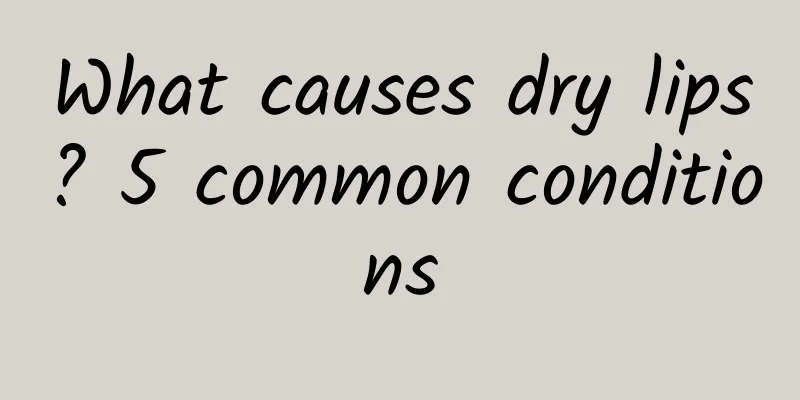How to treat binocular intermittent exotropia?

|
Binocular intermittent exotropia is a relatively common eye disease. Generally, it is caused by the retina tending to diverge greatly when looking at a distance, which can easily lead to exotropia. Exotropia in the eyes can not only seriously affect vision, but also easily lead to some complications. There are many ways to treat binocular intermittent exotropia, and it can be treated with corrective methods first. How to treat binocular intermittent exotropia? Causes The onset of the disease is mainly caused by imbalance of abduction and convergence functions. When the convergence ability is insufficient and the fusion ability is low, it cannot counteract the excessive abduction ability, causing the eye position to tend to deviate outward. Clinical manifestations Intermittent exotropia often occurs in early childhood. Initially, it only occurs when looking at distant objects. As the disease progresses, the frequency and duration of intermittent exotropia increase, and finally exotropia may also occur when looking at close objects. The manifestation phase of intermittent exotropia often occurs when one is tired, sick, sleepy, or inattentive. Intermittent exotropia may cause temporary diplopia in children with immature vision, which is quickly followed by suppression and abnormal retinal correspondence. A common symptom is photophobia, and one eye is often closed in outdoor sunlight. The reason is unknown. It is estimated that the patient is looking at distant targets outdoors, without the stimulation of nearby objects to bring the two eyes together. The bright sunlight flickers the retina and interferes with fusion. Intermittent exotropia may be combined with AV syndrome and may also be accompanied by other vertical strabismuses, such as dissociated hypertropia. examine 1. All strabismus items should be checked, with special attention paid to the measurement of the diagnostically significant exotropia angle, such as the exotropia angle when looking far away. It is best to have the patient look at a target > 6 meters away to fully check the degree of exotropia and determine the type of exotropia, because the timing and treatment methods of treatment are different. Refractive errors should be corrected during measurement to control accommodation. If intermittent exotropia only occurs when looking at a distance, and the distance exotropia angle is at least 15△ greater than the near exotropia angle, a cover test should be done: one eye should be covered for 30 to 45 minutes. When the cover is removed, the two eyes must remain separated, that is, when one eye is removed, the other eye must be covered with an eye patch. When the eyes are opened, a prism is used to uniformly measure the near exotropia angle quickly, and then the distance exotropia angle is checked to prevent the patient from having a chance to fuse. The result is compared with the exotropia angle before covering. 2. Measure the degree of upward and downward rotation to determine whether AV syndrome is present. 3. Measure the oblique angle when looking to the left and right to see if there are any lateral anisotropy problems. By definition, lateral nonconcordia occurs when the exotropia patient looks to the side with a deviation that is 20% less than the primary eye deviation. Clinical practice has shown that patients with lateral non-concordance are prone to overcorrection and develop a medical V sign. Check the acuity of stereoscopic vision: The patient's stereoscopic vision must also be measured during the latent strabismus period. If the stereoscopic vision is abnormal, it means that the stereoscopic vision has decreased due to the intermittent strabismus. If the stereoscopic vision continues to decrease within a few months, it is a strong indication for surgical correction of intermittent exotropia. treat 1. Correction principles Patients with obvious refractive errors in ciliary muscle paralysis refractive examination, especially astigmatism and anisometropia, should all be corrected to ensure a clear retinal image; those with exotropia accompanied by myopia should all be corrected; for those with exotropia accompanied by hyperopia, correcting hyperopia will reduce accommodative convergence and increase exotropia. Whether full or partial correction is needed depends entirely on the degree of hyperopia, the patient's age and the AC/A ratio. Usually, infants and young children with a value less than +2.00D do not need correction. For older patients, correction of hyperopia is usually necessary to avoid refractive fatigue. Elderly people with exotropia and presbyopia have weakened accommodation. If they need to correct hyperopia, they can be given the minimum degree to facilitate near vision. 2. Negative spherical lens Using a minus lens to correct intermittent exotropia can be used as a temporary measure, or placed in the upper half of the bifocal lens to treat excessive dilation; or placed in the lower half of the bifocal lens to treat insufficient convergence, stimulate accommodative convergence, and control exotropia. This treatment method should not be recommended, as children treated with this method often suffer from visual fatigue. 3. Prism and occlusion therapy The base-facing prism can strengthen the stimulation of the fovea of both eyes. A deviation of 1/3 to 1/2 can be corrected by prism stimulation fusion. Surgical treatment is not recommended for early intermittent exotropia because it is latent exotropia most of the time, the number of manifest exotropia is not frequent, and the deviation is not large. 4. Surgical treatment There is still controversy about the most appropriate age for intermittent exotropia surgery. Some people advocate that the earlier the surgery is performed, the better, otherwise it will become a constant exotropia. 5. Overcorrection Mild overcorrection in the short term after exotropia surgery is generally normal. If a large degree of overcorrection occurs immediately and is accompanied by restricted eye movement, it is necessary to consider whether muscle loss or slippage may have occurred. The lateral rectus muscle is less likely to slip than the medial rectus muscle. The esotropia can completely disappear within 10 to 15 △ after surgery. The amount of overcorrection after exotropia surgery also depends on the patient's age. Children with immature vision have a small amount of overcorrection. The patient should be carefully observed to see if there is a tendency for monocular fixation, and if possible, patch treatment can be used. In addition, the patient should undergo another eye examination, and any hyperopia should be fully corrected. If the patient still has stable esotropia of a large degree after 6 months of the above treatment, a second surgery may be considered. |
<<: What causes intermittent heartbeats?
>>: Ointment for treating genital warts?
Recommend
The skin on your face turns red when it gets hot
It is a normal physiological phenomenon that the ...
How to remove moisture from the body
Excessive moisture in the body, according to trad...
Why does my back itch frequently?
Most people pay more attention to facial skin car...
Treatment and recovery from depression
If you have depression, you must first acknowledg...
What to do if your lips are very dark
If your lips turn black, you should be alert. The...
How to make hair thicker?
Now with the increase of life pressure, more and ...
Dark and rough skin on ankles
When observing the skin on their ankles, people m...
Can I go swimming if I have a cough?
Coughing is not a single disease, it is a symptom...
What herbs can cure hemorrhoids?
Hemorrhoids are a common disease that is quite ha...
Symptoms of Folliculitis
Folliculitis is a relatively common skin disease....
What should I do if my throat hurts when I swallow saliva?
In daily life, sore throat is a situation that ma...
Is it effective to use a small needle knife to treat lumbar muscle strain?
Lumbar muscle strain is a common lumbar disease i...
What are the reasons for not having insomnia but having many dreams?
Many people do not suffer from insomnia when they...
The sequelae of IVF
Many people want to have a cute and lively baby, ...
Benign prostatic hyperplasia
With the continuous improvement of modernization,...









